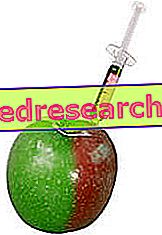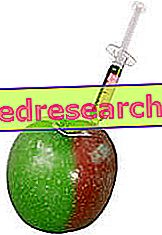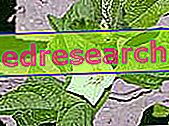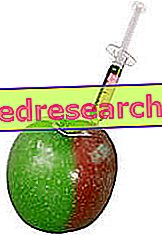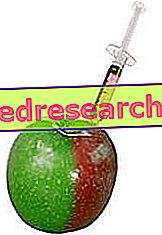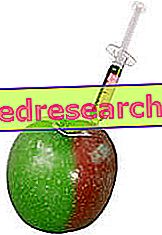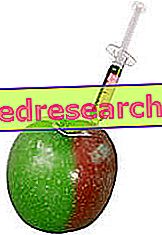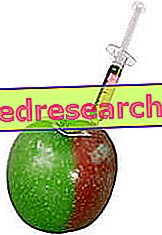Sulfur dioxide or sulfur dioxide is a colorless gas with an irritating odor (reminiscent of "rotten eggs") and extremely soluble in water, which is produced by burning sulfur when it comes into contact with air. It can be used as such or in liquid form, while sulphites appear as powders. In ancient times sulfur dioxide was used to disinfect fermentation vats, but it is only since 1920 that sulphites are used with some frequency during the preparation of food and drinks
Category food additives
E160e BETA-APO-8'-CAROTENAL (C30) Beta-apo-8-carotenal is a dye of natural origin, chemically modified, orange-red, with antioxidant properties. It can be contained in sweets, in condiments and in food supplements. It currently appears to be harmless. ADI DOSE: 5 mg per kg of body weight. E100 E101 E101a E102 E104 E110 E120 E122 E123 E124 E127 E128 E129 E131 E132 E133 E140 E141 E142 E150a E150b E150c E150d E151 E153 E154 E155 E160a E160b E160c E160d E160e E160f E161 E161a E161b E161c E161d E161e E161f E161g E162 E163 E170 E171 E172 E173 E174 E175 E180
E161d RUBIXANTINA (CI 75135) Rubixanthin is an orange-red colorant, of natural origin, belonging to the xanthophyll family. It is synthesized mainly from the petals of roses. At the moment no harmful effect on human health is known. ADI DOSE: / E100 E101 E101a E102 E104 E110 E120 E122 E123 E124 E127 E128 E129 E131 E132 E133 E140 E141 E142 E150a E150b E150c E150d E151 E153 E154 E155 E160a E160b E160c E160d E160e E160f E161 E161a E161b E161c E161d E161e E161f E161g E162 E163 E170 E171 E172 E173 E174 E175 E180
E161c CI CRIPTOXANTINA (CI 75135) Cryptoxanthin is a yellow dye, of natural origin, belonging to the xanthal family. It is present in the orange peel, in the berries of the Alchechengi ( Physalis alkekengi L .: perennial plant, belonging to the family of the Solanaceae, which produces edible berries) and in other plant species
E161g CANTAXANTINE Canthaxanthin is a yellow-orange dye, of natural or natural-identical origin. It is often present as a dye additive in food products and in the cosmetic and pharmaceutical industry. Some scholars argue that it can be a "risky and toxic" additive for the liver, and can cause the formation of irreversible crystals in the retina
E162 RED BEET OR BEETAN Beetroot red is a dye of natural origin, red-purple, extracted from red beets ( Beta vulgaris ) by squeezing or extracting with water from the cut roots, and then enriching it with the active ingredient. The dye is formed by different pigments belonging to the class of betalains
E161f RODOXANTIN (CI 75135) Rodoxanthin is a yellow or purple colorant, of natural origin, belonging to the xanthophyll family. It is a dye rarely used in the food industry. Rodoxanthin is present in small quantities in the seeds of Taxus Baccata (see photo) and in the feathers of some birds. At the moment there are no known side effects harmful to humans
E161 XANTOFILLE The xanthophyll group represents a set of natural substances that belong, from a chemical point of view, to the carotenoid family. In fact they have the fundamental chemical structure of the carotene, but unlike the latter they contain oxygen atoms. The xanthophylls have an undefined color, which varies from yellow to red
E163 ANTOCIANI The anthocyanins or anthocyanins, belonging to the flavonoid family, are polyhydric polyhydroxy compounds, able to react with oxidants (such as molecular oxygen and free radicals) neutralizing them and thus decreasing the tissue damage that these molecules can cause. Anthocyanins are a set of water-soluble pigments that give color to fruits, vegetables and flowers
E171 TITANIUM DIOXIDE or TITANIUM DIOXIDE Titanium dioxide is a white powder of mineral origin. It can be contained mainly in sugared almonds, chewing gum, sweets etc. Titanium dioxide can be used in various ways: as a white pigment used in paints and building cement, in plastics and as a matting powder for colored paints (it is therefore called "titanium white"); as a catalyst capable of degrading, by oxidation, numerous organic compounds; in the form of nanometric particles, titanium dioxide can also be used in some cosmetics (to be precise, body creams and makeup); it is also inclu
E161e VIOLAXANTINA (CI 75135) Violaxantina is a yellow or purple dye of natural origin, obtained by the oxidative transformation of zeaxanthin. Violaxanthin is usually extracted from violet and pansy petals (see photo respectively), but it can also be present in some species of higher plants and algae

